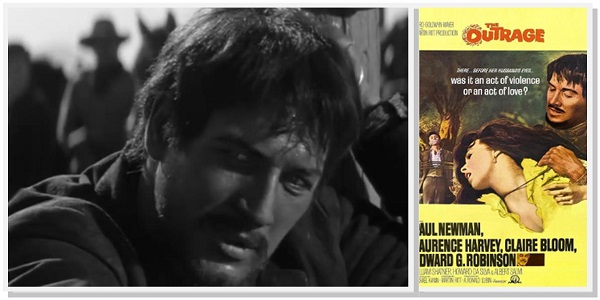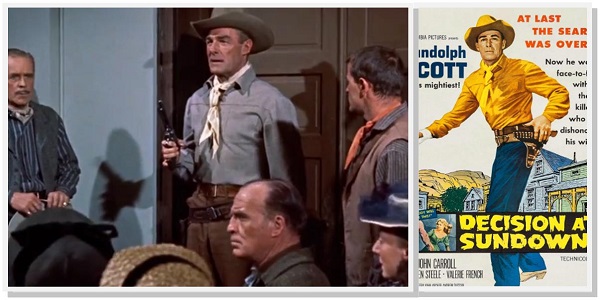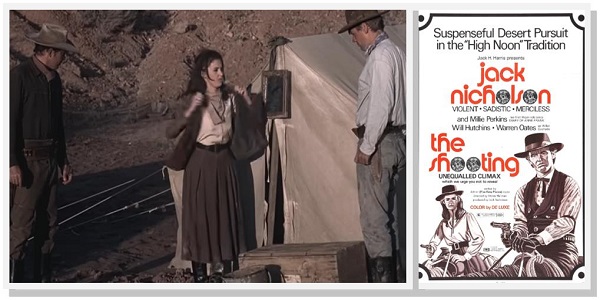Martin Ritt and Paul Newman have been a successful team in a number of productions including the westerns Hud (1963) and Hombre (1967). In between the two, they teamed up once more on the western drama The Outrage, an adaptation of the Japanese period drama Rashomon (1950).
The Outrage uses a framed narration whereby a case of rape and murder in the wild in the post-Civil War years is discussed by three men from a town at a train station in the Southewest. They talk about how three different people at the trial gave three different accounts of the crime that killed the husband and left his wife raped by the accused. One of these is the confessional account of the suspect Juan Carrasco (Paul Newman), the second of the wife (Claire Bloom) who was sexually assaulted, and the third of the husband (Laurence Harvey) from the world of spirits as channeled by a Native shaman.
Unlike many traditional westerns where a single narration is followed, splitting the story into three different stories of the same event make it an open-ended case whose conclusion is left to the viewer’s imagination. The point of relativity in narration and accordingly in truth is hard to miss here, especially at the end when a fourth narration further confounds the question of how the husband really died – murder, suicide, or accident.
Ritt makes great use of the sight and sound of water in The Outrage. The rainy night of the current story at the train station is audibly connected to the crime scene by the stream where the rape, fight, and killing all take place by the sound of flowing water. If only water could bear witness!
The Outrage is an allover interesting work in the western and drama tradition. It challenges conventional narration in western storytelling while making you an even bigger fan of Paul Newman’s incredible acting talent complemented by memorable performances by the rest of the cast.




